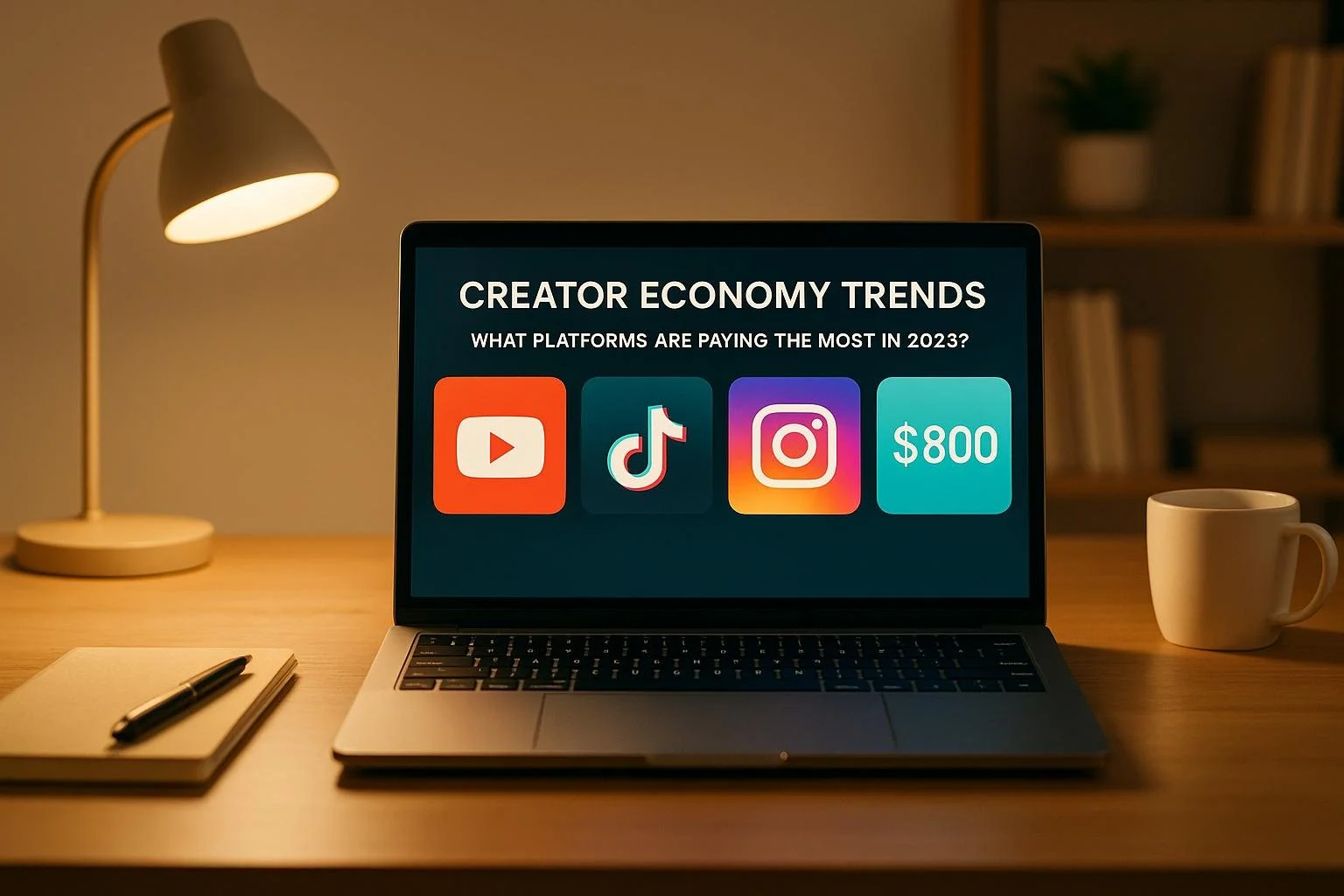Which Platforms Pay Creators the Most in 2025? TikTok, YouTube & Instagram
The creator economy is booming in 2025. Yet earning potential varies widely across platforms. Here’s a breakdown of what top platforms pay today—and why YouTube, TikTok, and Instagram each deserve a closer look.
1. YouTube: The Most Reliable Earner
First, YouTube continues to dominate in long-form monetization. Creators typically earn between $1–$5 per 1,000 views, with top niches like finance and tech paying upwards of $10–$25 per 1,000 views.
Next, YouTube offers multiple revenue streams: ad sharing, channel memberships, Super Chats, and even Content ID payouts.
Also, creators keep around 55% of ad revenue, which adds up fast when combined with premium content.
Furthermore, a single well-performing video in a high-paying niche—like a 10-minute financial explainer—can earn creators thousands of dollars on its own.
2. TikTok: Fast Reach, Lower Per‑View Pay
Also, TikTok’s direct per-view payouts remain low—approx $0.02–$0.04 per 1,000 views from the Creator Fund.
Yet, creators can earn $0.40–$1.00 per 1,000 views via the more selective Creator Rewards Program.
In addition, TikTok’s live gifting system and Shop integrations can deliver tens of thousands per month when executed well.
Still, creators often rely heavily on sponsored posts. Micro-influencers with 10K–100K followers typically earn $300–$2,500 per post, while macro and mega influencers can command $10,000–$500,000+ per post.
3. Instagram: Sponsorships & Bonuses Pay Big
Furthermore, Instagram’s payout model is increasingly built around sponsored content. Influencers with medium to large followings can command $500–$10,000+ per sponsored post, depending on niche and engagement.
Additionally, Instagram’s Reels Bonus and Creator Bonus programs offer payout rates from $0.50 to $2.50 per 1,000 views for top-performing short-form content.
Also, Meta’s latest referral and bonus programs can pay creators up to $50,000 per month—or high-profile TikTok creators $300,000 over six months—for exclusivity and posting volume.
Moreover, creators earn commissions from affiliate links, shopping tags, and subscriber-based content. Instagram gives creators 5–20% commission on sales through its Shop tool.
Earnings Models Compared
Each platform rewards creators differently:
YouTube shines with stable ad-based income, memberships, and live revenue streams.
TikTok offers viral potential, brand deals, and commerce tools—but low ad payouts.
Instagram excels in high-value sponsorships and reward programs backed by Meta.
Creator Insights & Real Experiences
Also, community feedback confirms these trends. Reddit users frequently criticize TikTok’s Creator Fund as inadequate, regardless of the view count. One creator with 35 million views earned a fraction of what a similar YouTube channel might generate.
Also, Reddit surveys show Instagram tends to pay about 40% more on average than TikTok for creators of similar size and engagement.
Furthermore, creators report that Instagram selects bonuses and exclusive offers that often outperform the passive payout models of TikTok.
What Drives Payout Differences?
Several factors explain why some platforms pay more:
Audience location matters. U.S., UK, and European traffic pays higher ad rates. YouTube’s RPM can hit $5–$10 per 1,000 views in these markets versus fractions of a dollar in low‑CPM regions.
Content format matters. Long-form video (YouTube) is more profitable, while short clips (TikTok, Instagram) generate lower ad income unless sponsored.
Niche specialization influences sponsor fees. Finance, tech, and education creators typically command higher per-post pay. Lifestyle or entertainment may need a broader reach to match payouts.
Platform tools. YouTube provides built-in monetization layers. TikTok relies more on sponsoring and affiliate commerce. Instagram rewards creators through flexible bonuses, affiliate commissions, and exclusive programs.
Who Wins Overall?
First, YouTube offers the most dependable ad income and diverse revenue streams if you can sustain long-form production.
Second, Instagram attracts higher sponsorship rates per post and can deliver significant cash through bonuses.
Third, TikTok offers explosive reach, but creators often need brand deals or commerce features to earn comparably.
Strategy Tips for Creators
Diversify across platforms. Combine YouTube ad revenue with Instagram sponsorships and TikTok commerce for multiple income paths.
Choose niches carefully. Tech, finance, or business content can boost RPM on YouTube and brand deal fees on IG.
Engage with platform bonus programs. Passive viewers won’t earn much—apply to invite-only programs to unlock higher per-view rates.
Focus sponsorship strategy. Micro- and mid-tier creators generally command better per-post ROI than relying solely on platform payouts.
Final Thoughts
Ultimately, earning potential in 2025 depends on strategy. YouTube offers stability and ad-based diversity. Instagram provides brand pay and bonus flexibility. TikTok offers virality—but lower baseline payouts.
In the end, combining long-form content on YouTube, branded posts on Instagram, and commerce on TikTok delivers the greatest earning power. Smart creators use each platform's strengths to build a sustainable income for the long haul.
